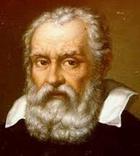
Archimedes of Syracuse (Greek Ἀρχιμήδης) (Siracusa (Sicily) ca. 287 BC -.. Ibid, ca. 212 BC) was a Greek mathematical physicist, engineer, inventor, and astronomer. Although few details of his life are known, is considered one of the leading scientists in classical antiquity. Among his advances in physics are the foundations on hydrostatics, statics and the explanation of the principle of the lever. He is recognized for designing innovative machines, including siege engines and the screw of Archimedes, which bears his name. Modern experiments have tested claims that Archimedes designed machines capable arrived to take water or enemy ships on fire using an array of mirrors.
Archimedes is considered one of the greatest mathematicians of antiquity and, in general, the whole story. He used the method of exhaustion to calculate the area under the arc of a parabola with the summation of an infinite series, and gave a very accurate approximation of pi. He also defined the spiral bearing his name, formulas for the volumes of surfaces of revolution and an ingenious system for expressing very long numbers.
Archimedes died during the siege of Syracuse (214-212 BC.), When he was killed by a Roman soldier despite orders that he existed is not to do any harm.
Unlike his inventions, the mathematical writings of Archimedes were little known in antiquity. Mathematicians from Alexandria read and quoted him, but the first comprehensive compilation of his work was not performed until c. 530 d. C. by Isidore of Miletus. Reviews of the works of Archimedes written by Eutocius in the sixth century first opened to a wider audience. The relatively few copies of Archimedes' written work that survived through the Middle Ages were an important source of ideas during the Renaissance, while the discovery in 1906 of unknown works by Archimedes in the Archimedes Palimpsest has provided insights into how he obtained his mathematical results.





